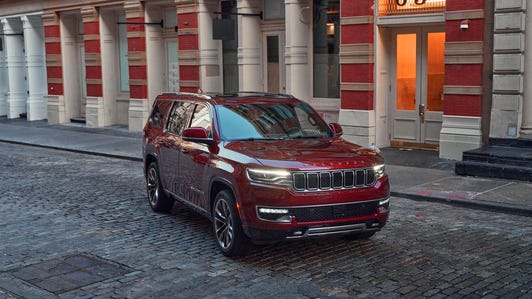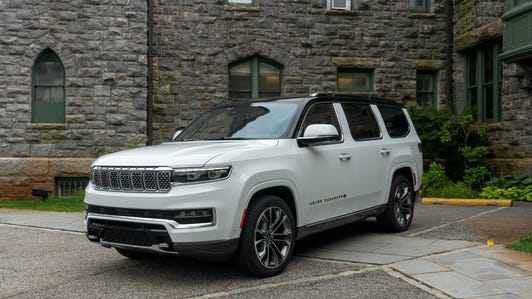Stellantis Unveils the Hurricane, a Clean-Sheet 3.0-Liter Inline-6 Turbo – Roadshow [CNET]
On the side of the Hurricane rests two small turbochargers, which Stellantis chose over a single, larger turbocharger in order to deliver boost faster and at lower engine revs. The SO and HO variants will each wear unique turbochargers, with the SO’s snails topping out at 22 psi, while the HO’s compressors offer a bit more squeeze at 26 psi.
The two Hurricanes share some 96 different parts, including the block, exhaust camshaft and coolant pumps. But there are profound differences between the two still. The Hurricane SO will rely on cast aluminum pistons and a 10.4:1 compression ratio; regular unleaded will suffice here, but Stellantis recommends premium for a small output boost. The Hurricane HO, on the other hand, uses forged aluminum pistons with a 9.5:1 compression ratio. That one will only suck up 91 octane and above.
For those of you sitting here wondering where the electricity comes in, don’t worry, it will likely happen. While Stellantis didn’t launch the Hurricane with any electrified variants on offer, the automaker promises that the engine was build with electrification in mind. Whether that alludes to a mild hybrid or a plug-in hybrid remains a secret, but based on Stellantis’ work in the PHEV space over the last few years, it’s not obscene to assume the Hurricane could end up as part of a plug-in solution.
Right now, it’s also still unclear exactly which vehicles will utilize the Hurricane, but we have some ideas. The first vehicles with this tech under the hood will arrive at dealerships this year, so it will likely land in a 2022 or 2023 variant. Stellantis did say that this will become the engine of choice for future US cars on the STLA Large and STLA Frame global platforms. That would make it a prime replacement for the 5.7-liter Hemi V8 in, say, a future Ram 1500 or Jeep Wagoneer, but again, we’ll have to wait until Stellantis gives us more information before any of that is confirmed.

![stellantis-unveils-the-hurricane,-a-clean-sheet-3.0-liter-inline-6-turbo-–-roadshow-[cnet]](https://i0.wp.com/upmytech.com/wp-content/uploads/2022/03/57092-stellantis-unveils-the-hurricane-a-clean-sheet-3-0-liter-inline-6-turbo-roadshow-cnet.jpg?resize=800%2C445&ssl=1)




![best-buy-just-dropped-prices-on-top-tech-for-the-weekend-–-cnet-[cnet]](https://i0.wp.com/upmytech.com/wp-content/uploads/2024/03/173789-best-buy-just-dropped-prices-on-top-tech-for-the-weekend-cnet-cnet.png?resize=300%2C169&ssl=1)
![uk-shrinks-timetable-for-telcos-to-stop-installing-5g-kit-from-huawei-[techcrunch]](https://i0.wp.com/upmytech.com/wp-content/uploads/2020/11/16564/uk-shrinks-timetable-for-telcos-to-stop-installing-5g-kit-from-huawei-techcrunch.jpg?resize=390%2C205&ssl=1)